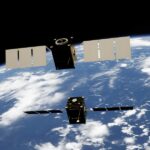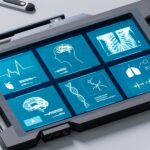When it comes to predicting the weather, precision plays a role in safeguarding the well-being of individuals and communities. Technological advancements have significantly enhanced our ability to forecast weather accurately. One crucial instrument in this process is the utilization of weather radar services.
Today, there is an array of weather radar services each asserting its supremacy in accuracy. However, with numerous choices available, determining which service truly lives up to its claims can pose a challenge. This article is an attempt at the weather radar explanation while also comparing the services.
Understanding the Functionality of Weather Radar: What is Radar?
Before delving into the evaluation process, let’s grasp how weather radar functions. Weather radars utilize radio waves to detect precipitation and gauge its movement and intensity within an area. By analyzing these data points, meteorologists can enhance their ability to predict weather conditions.
Weather Radar Service A: Reliability and Information-Rich
One notable weather radar service currently on offer asserts precision through state-of-the-art technology and an extensive network for collecting data. This service prides itself on delivering visuals that offer real-time updates on severe weather occurrences, like storms, rainfall intensities, hail detection and wind speeds. Users can easily navigate through a user interface, with options like zooming in and overlays to track lightning strikes or storm movements, which provide them with helpful tools to improve their awareness of the situation.
Weather Radar Service B: State-of-the-Art Technology Unleashed
Cutting-edge technology is at the core of another prominent player in this field, enabling them to create precise forecasting models using robust computer systems. Their extensive radar network captures data from regions simultaneously, ensuring accurate localized forecasts.
Moreover, this radar service offers representations such as reflectivity clouds (indicating areas of rain or snow), storm velocity (assessing severity), and precipitation data. Their advanced algorithms also play a role in identifying thunderstorms and tornadoes.
Weather Radar Service C: Extended Range for Unparalleled Accuracy
In a league of its own, one particular weather radar service stands out for its coverage range achieved through positioned radars that transmit real time data. This service enhances location detection capabilities by leveraging technology, improving overall accuracy.
This exceptional weather radar service also complements high-resolution forecasting data with insights to support decision-making. These days we can expect rainfall, potential flooding, and the tracking of hurricanes, with precise models depicting wind speed and direction. Additionally, there will be forecasts for temperature variations and dew points hour by hour.
Deciding on the Reliable Weather Radar Service
After reviewing three weather radar services and their unique features, it’s time to determine the accuracy.
Evaluating accuracy through simulated scenarios – We compare how each service provides radar coverage using computer simulations that replicate real-life storm situations. The results are then compared with ground observations and other reliable sources to assess the accuracy levels of each weather radar service.
Real-time performance during weather events – The actual value of a weather radar service is demonstrated during weather occurrences like rain storms or tornadoes. By examining how well each system identifies weather patterns, in time, we can judge their ability to deliver accurate forecasts that matter.
Location specific predictions through proximity analysis – Another essential factor in evaluating the precision of a weather radar service is its ability to analyze proximity accurately.
After examining the reliability of each system in delivering weather predictions regarding an individual’s location, it becomes evident that individuals living in smaller towns or remote areas benefit significantly from the detailed insights provided, especially when compared to ground-level observation systems typically found near major cities or airports.
Summary
In this comparative study, we have delved into three weather radar services to determine the dependable option. While each service boasts advantages and technological advancements, factors such as calibrated simulations, real-time performance during weather events, and proximity analysis emerge as crucial metrics for consistently assessing accuracy. With progress, we anticipate even more significant enhancements in weather radar systems. Ultimately, accurate and dependable weather forecasts play a role in enhancing safety for people and communities.
Published By: Aize Perez



















